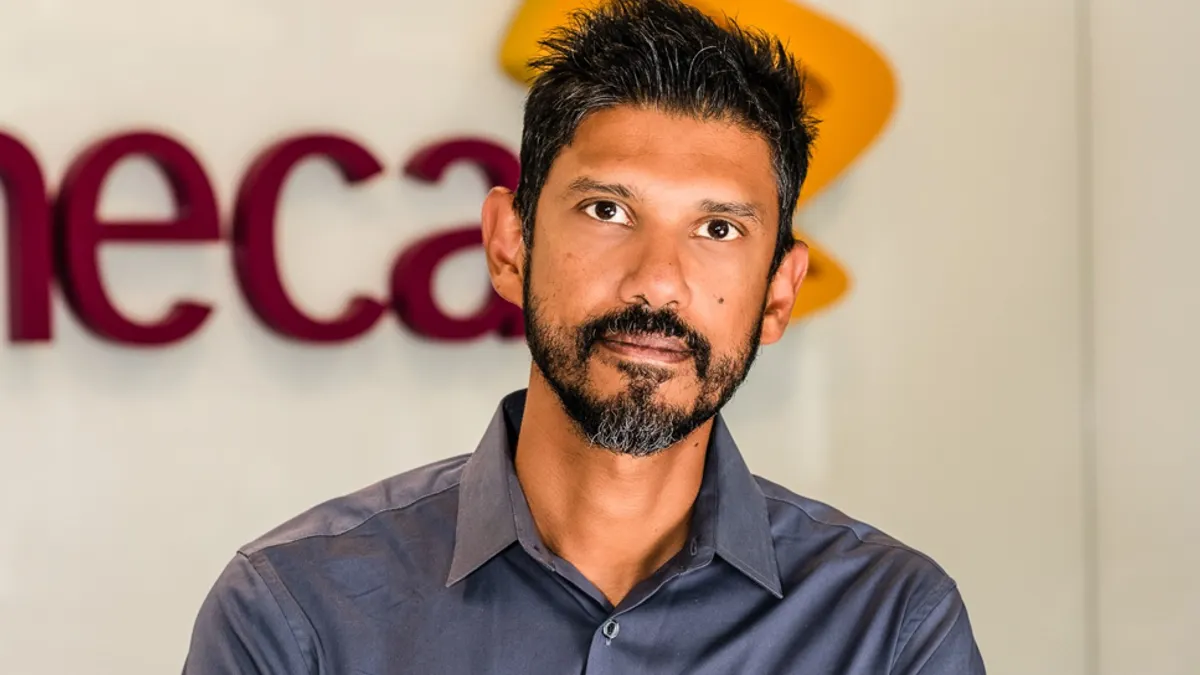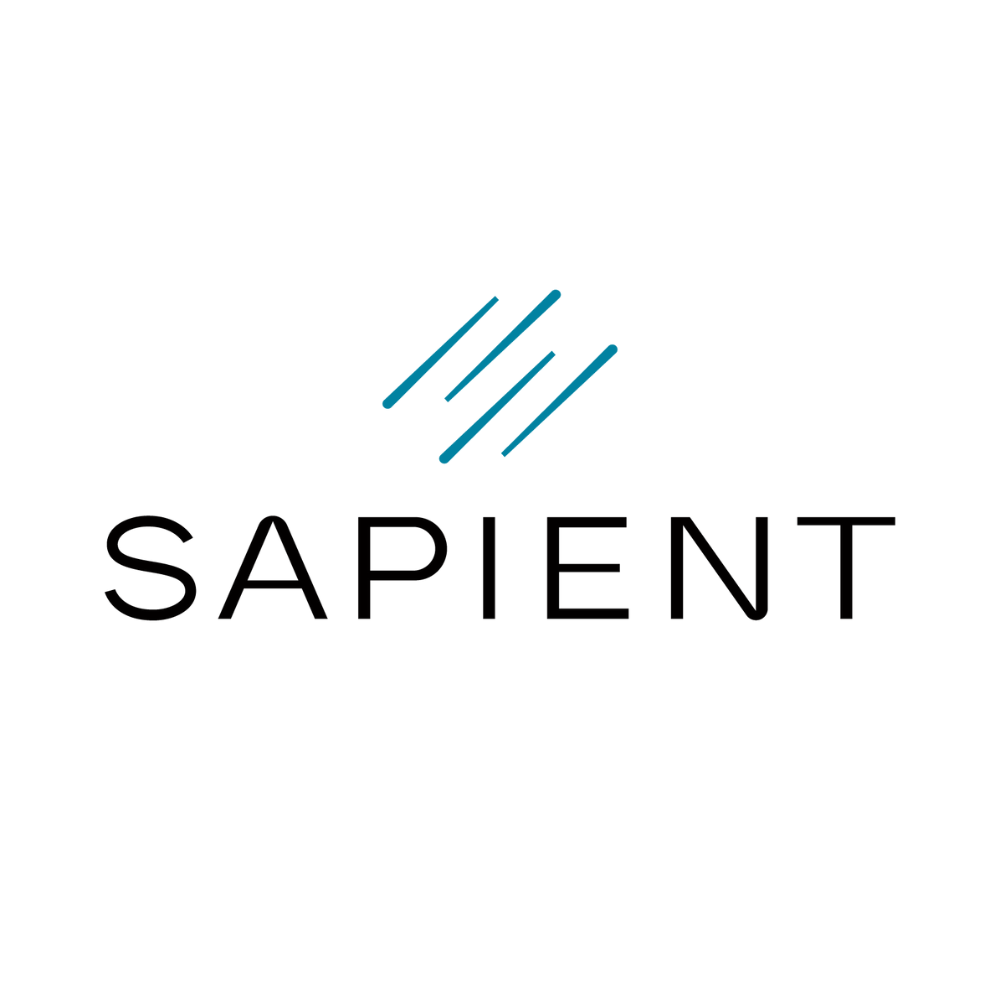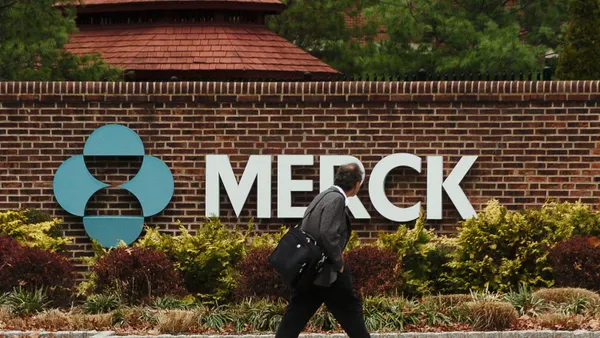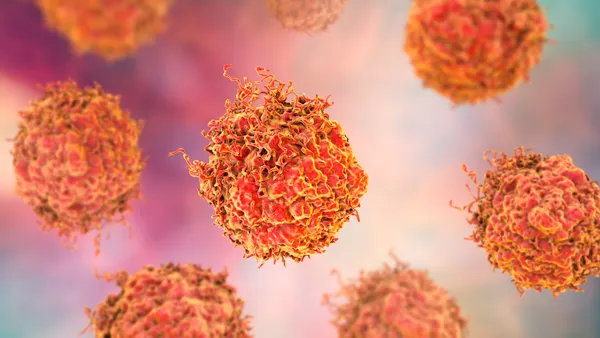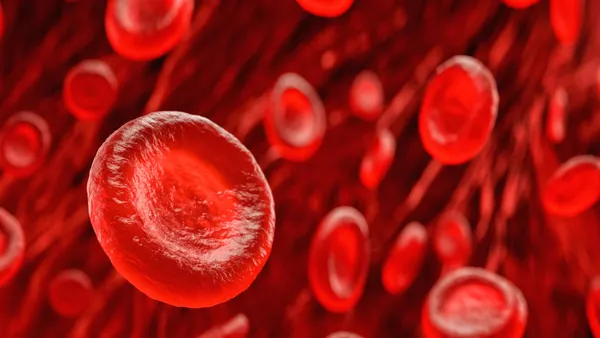For AstraZeneca, a single mutation has launched an entire blockbuster lung cancer franchise.
In 2003, the pharma giant began a complicated journey that was almost doomed from the outset. The lung cancer treatment Iressa, which targeted the mutation of the EGFR gene, was cleared by U.S. regulators but pulled from the market two years later due to low efficacy.
But in the ensuing years, AstraZeneca learned more about the subset of people who did respond to its medication, and by 2015 Iressa was re-approved based on studies in patients with these “EGFR mutations.” Shortly thereafter, the company capitalized by bringing to market an EGFR-targeting medicine called Tagrisso, which has since gone on to become a multibillion-dollar seller and the cornerstone of its lung cancer portfolio.
The drug’s success has been part of an ascension for AstraZeneca’s oncology business that continues to this day. In a final analysis from a late-stage study, a combination of Tagrisso and chemotherapy meaningfully extended survival in patients with EGFR-mutated non-small cell lung cancer. The recent approval of Datroway, though narrower than initially anticipated, could build on the company’s EGFR business and contribute to its lofty goal of treating more than half of all patients with lung cancer by 2030.
PharmaVoice spoke with Arun Krishna, the vice president and head of AstraZeneca’s lung cancer programs, about how the company’s strategy has evolved to embrace EGFR-targeting therapies. The following interview has been edited for brevity and style.
PHARMAVOICE: How did EGFR become such an important mutation to target, from AstraZeneca’s perspective?
ARUN KRISHNA: Most people associate lung cancer with a smoker's disease, but we know very clearly that 20% of people who get lung cancer have actually never smoked. So our journey started with the whole EGFR space because we understood from the science that if you have an oncogenic driver like EGFR, that’s something that leads to lung cancer in nonsmokers. Ten years ago, we got our first approval with Tagrisso in [specific EGFR mutation] T790M, so we started with a very small population in second line, and quickly moved to first line with the Flaura study that showed overall survival benefit. Since then, Tagrisso has been the standard of care in EGFR.
We’re moving to identify lung cancer earlier. We [now] have EGFR data not just in the metastatic setting, but also in the early stage. Tagrisso is the backbone treatment for all EGFR patients across all stages of their cancer. Twenty years ago, the only option patients had was chemo. The science has evolved tremendously.
AstraZeneca has a slate of lung cancer drugs, Datroway being one of the latest approvals. What is the importance of having several drugs that target the same mutation?
There are different patient types, all within the EGFR space. Some of them might benefit from monotherapy. Some might benefit with a combination of treatments, because ultimately, that is where the future is going. There's not one single modality that addresses a specific type of cancer, so we are looking at multiple ways to attack the cancer through combinations of treatment.
AstraZeneca has a goal to treat more than half of all people with lung cancer with one or more of its drugs by 2030. How will you accomplish that?
There's a [multi]-pronged approach to achieving this. One is through the medicines, making sure we are not just looking at single agents, but combinations. Secondly, we’re moving into the earlier part of the patient journey. But that isn't sufficient, because we know the rates of screening in lung cancer are very low, especially here in the U.S. There isn't a policy around screening for people who have never smoked. So one of our big goals in the next three to five years is to partner with health systems, partner with our clinical community, partner with patient advocacy groups to drive that awareness of screening. In addition, we’re working in collaboration with universities and academic centers to look at programs for nonsmokers so they can be detected earlier. It goes in tandem: You have the medicines that we’re discovering and moving into the clinic very quickly, but at the same time working in the environment to be able to rapidly drive the adoption of screening strategies in the population.
EGFR is now a well-established target for lung cancer, but that wasn’t always the case. Does the infrastructure still exist to make those kinds of leaps?
We are on the cutting edge, and we're in the center of that explosion of science and technology. We're going to discover more subtypes and mutations. But there’s still a gap, and that’s what needs to be addressed. We’ve come leaps and bounds, but there’s still work to be done at the grassroots level, at the community level, to make sure that clinicians are aware, and that patients ask to be tested for their biomarker so they then get the right treatment at the right time, and have the best survival outcome possible.



